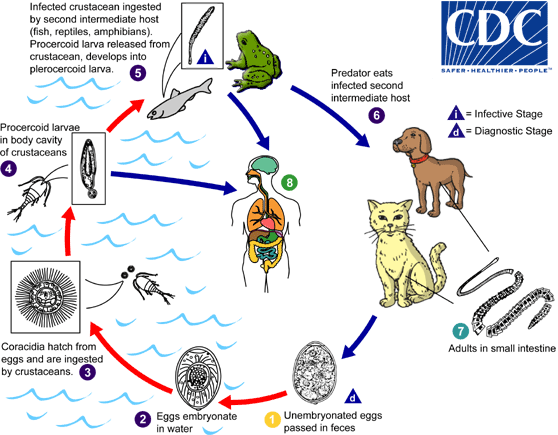Subclass Eucestoda Family Diphyllobothriidae Higher classification Diphyllobothriidae | Phylum Platyhelminthes Order Pseudophyllidea Scientific name Spirometra Rank Genus | |
 | ||
Similar Spirometra erinaceieuropaei, Tapeworms, Pseudophyllidea, Diphyllobothriidae, Dipylidium | ||
2 7 metre spirometra tapeworm
Spirometra is a genus of Pseudophyllid cestode that reproduces in canines and felines but which can cause pathology in humans. As an adult, this tapeworm lives in the small intestine of its definitive host and produces eggs that pass with the animal's feces. The eggs hatch into coracidia which are eaten by copepods which become infected themselves. In the copepod, the worm forms a procercoid, which is infective to vertebrates that ingest them. Often, because the copepods are so small, vertebrates ingest copepods accidentally by drinking them. In the vertebrate, the worms enter the plerocercoid stage. The plerocercoids pass through several paratenic hosts before reaching a suitable definitive host where it can mature. Once eaten by a canid or felid, the tapeworm matures and begins producing eggs. Theoretically, a canid or felid that ate an infected human could become infected.
In paratenic hosts (any vertebrate infected but a canid or felid), plerocercoids move to subcutaneous tissues and the eye from the small intestine, causing pain, edema, and inflammation. A few humans have died from this kind of infection, called sparganosis. The only way to treat this condition is with surgery.
Infection of humans may be prevented by avoiding uncooked meat, infected water, and poultices. It is also known to infect rats.
